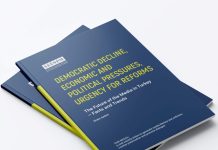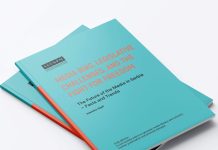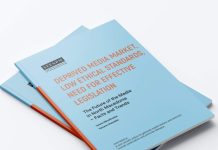We live in an era when the very foundations of journalism are being renegotiated—between the demands of digital capitalism, the rise of algorithmic governance, and the enduring need for truth in public life.
By: Nevena Ršumović
These tensions, as well as the possibility of creating new frameworks for their understanding and overcoming, were at the center of the panel “On the Frontline of Defending Freedom of Expression” at the International Our Media Conference, recently organized by the SEENPM network and Mediacentar Sarajevo.
Dr Snježana Milivojević, former professor at the University of Belgrade, stressed that the world is navigating a unique and turbulent moment demanding deep reflection on the state and future of media.
The media’s role has rarely been more vulnerable—yet paradoxically, this moment offers an unprecedented opportunity, driven by the paradigmatic change in media regulation embodied in the European Union’s new suite of laws: the European Media Freedom Act [EMFA], Digital Services Act [DSA], Digital Markets Act [DMA] and Artificial Intelligence Act [AI Act].
These regulations—particularly the European Media Freedom Act (EMFA)—mark a historic shift in how media are perceived and governed across Europe and beyond. They acknowledge that the media is no longer a national issue but a shared European concern, Milivojević noted.
“For the first time, Europe is crafting a comprehensive regulatory framework that unites previously fragmented spheres—broadcasting, press, local, and national—within a single system suited to the digital age”, Milivojević argued.
Spillover effect – EU media laws apply to foreign actors
“Though Europe lags in digital innovation, it leads in regulating it”, Milivojević said. The EMFA forms part of a broader package spanning privacy, AI governance, and online platform accountability, consolidating all digital services circulating in the EU.
“Crucially, it abandons the old country-of-origin principle in favour of collective European oversight applying equally to foreign actors operating inside or outside EU borders”, Milivojević argued further explaining that “non-EU actors are not protected with the country-of-origin principle, which was always a safe harbour for big tech platforms”.
“Under the EMFA, any non-EU media service targeting EU citizens will fall under European regulatory oversight”, she pointed out, adding that the new approach also applies to non-EU media in their neighbourhood, including within South-East Europe.
“This is not protectionism, but a European cosmopolitanism ensuring a level playing field and safeguarding of fundamental rights—especially media freedom—within the digital realm”, Milivojević argued.
The new EU media laws will inevitably create a spillover effect across the Western Balkans and Southeast Europe. Some media groups already operate—or plan to operate—beyond national borders, distributing content across neighbouring EU member states. This means cross-border media from the Western Balkans could be held to stricter standards and subject to complaints mechanisms available to EU audiences, effectively extending the EU’s media governance framework into the region, Milivojević explained.
Regulatory shield from political interference
At its core, the EMFA recognizes that media—central to democracy—requires active protection in the digital age. It introduces safeguards against political interference and manipulation, addressing today’s environment of disinformation and external influence.
The Act also confronts the dominance of big-tech platforms, demanding transparency and accountability in how content is moderated and disseminated. It obliges major online platforms to apply distinct rules to recognized media outlets, ensuring fair treatment, reducing arbitrary takedowns, and strengthening journalistic independence.
What distinguishes the EMFA from previous regulatory mechanisms is its focus on citizens’ rights. “For the first time, it enshrines access to pluralistic, high-quality information as an individual right, affirming that every citizen must be able to rely on trustworthy, diverse sources—and that states must enable this right”, Milivojević stressed.
“This marks a leap from protecting the press to safeguarding the public’s right to information serving the common good—critical in an era of distrust and widespread scepticism toward the media”, she explained.
EMFA as a challenge and opportunity for Western Balkans
For the Western Balkans and Southeast Europe, the implications are far-reaching, Milivojević warned. Aspirant EU members will face mounting pressure to harmonize national laws with these standards.
This extends beyond compliance: it embeds principles of independence, pluralism, and transparency into the region’s legal fabric. “The EMFA’s extraterritorial scope means Southeast European outlets operating within EU markets—or accessible to EU audiences—will be subject to its rules, influencing how they produce and distribute content”, Milivojević emphasized.
The regional media environment—already challenged by ownership concentration, external influence, and public distrust—will need to adapt. As Dr Milivojević observed, the regulation addresses the vulnerabilities of media ecosystems in regions where disinformation campaigns and foreign-backed manipulation have become powerful tools. The EMFA could provide a safeguard, but its effectiveness depends on local governments, civil society, and media professionals actively advocating for authentic implementation.
Equally significant is the potential impact on media consumption. As digital engagement grows, audiences increasingly abandon traditional outlets for social media and alternative platforms, often doubting the reliability of information. In Southeast Europe, many users verify news through search engines or personal networks, undermining journalism’s authority. Dr Milivojević emphasized that this shift highlights an urgent need to rebuild trust and prioritize transparency and quality—goals the new EU framework explicitly supports.
In conclusion, the EMFA is more than another legislative measure; it is a bold, rights-based reimagining of media governance. It elevates the debate from fragmented national policies to a unified European framework responsive to technological and democratic realities.
For the Western Balkans and Southeast Europe, it represents both a challenge—to meet demanding new standards—and an opportunity to align more closely with Europe’s highest democratic values.
Press freedom worldwide – ‘to be determined’
Sarah Clark of IFEX painted a stark global picture, calling this moment “to be determined” for press freedom and democracy. Representing a network of over 100 organisations in 70 countries, she noted that in nearly 80 percent of them, media freedom is on a downward path.
She linked this regression to two seismic shocks — the Trump administration’s retreat from international norms and the Gaza war — both exposing deep cracks in the global system meant to uphold rights. Clark described “an international system in free fall,” with the U.S. withdrawal from global institutions accelerating the erosion of accountability and emboldening autocratic governments worldwide.
She underlined how Western hypocrisy — especially in the response to Gaza and repression of protests — has shattered trust in media and democratic institutions. Yet she also pointed to “bright lights”: even in countries where press freedom faces serious challenges, efforts to demand accountability show that resistance, though tested, continues to persist.
Clark warned that the unchecked power of tech monopolies now poses a new frontier of threats, with major platforms resisting EU regulation and amplifying disinformation. Still, she closed on a call to defend and widen spaces for independent journalism and civic action before the next wave of democratic backsliding hits.
From erosion to action
Brankica Petković from Slovenia’s Peace Institute supported that global perspective with data and research. Drawing from regional and EU-wide studies, she described a “structural erosion” of conditions enabling free expression — not through direct censorship, but through “substitution”: flooding the public space with propaganda, hate speech, and manufactured pluralism.
She highlighted a paradoxical growth of media outlets alongside a shrinking professional core of journalists — a “landscape growing in quantity but not in quality.” This, she argued, mirrors a wider legitimacy crisis where citizens feel detached from the media and democratic systems.
Yet Petković refused fatalism. She cited emerging signs of resilience — from student protests in Serbia to various regional collaborations. Europe, she insisted, must lead in rebuilding democratic media systems, but without complacency: “Europe is not a flawless model.” The EU’s legal frameworks, such as the EMFA, must be coupled with local partnerships and community-rooted solutions.
“Defending press freedom isn’t enough on its own — we must also expand and strengthen the spaces for independent journalism and civic action”, Petković said.
Truth is everyone’s fight
Erol Önderoğlu, a seasoned reporter from Turkey and a representative of the Reporters Without Borders, brought a sobering perspective from his country, where most of the media is government-controlled and independent journalism survives under constant threat.
“There is a very alarming situation in Turkey, where more than 85% of national corporate media is controlled by the government. Yet, we should always keep in mind the very dynamic involvement of critical media and civil society organisations in the country”, Önderoğlu said.
In that context, he described a paradoxical reality: Turkey gaining geopolitical visibility even as domestic freedoms collapse. Covering trials of journalists weekly, he underscored how systemic repression, arbitrary detentions, and self-censorship hollow out the public sphere.
Still, Önderoğlu noted that new initiatives Europe-wide offer reference points for progress. In Turkey, he said, sustainability increasingly depends on rebuilding reader-based models as international funding wanes.
Together, the experts’ interventions converged on one conclusion: despite mounting pressures, the struggle for media freedom is not over but transforming. The next chapter will be defined less by external aid or legal frameworks, and more by the ability of journalists, institutions, and citizens to reclaim trust and co-own the fight for truth.

The regional program “Our Media: A civil society action to generate media literacy and activism, counter polarisation and promote dialogue” is implemented with the financial support of the European Union by partner organizations SEENPM, Albanian Media Institute, Mediacentar Sarajevo, Press Council of Kosovo, Montenegrin Media Institute, Macedonian Institute for Media, Novi Sad School of Journalism, Peace Institute and Bianet.
This article was produced with the financial support of the European Union. Its contents are the sole responsibility SEENPM and do not necessarily reflect the views of the European Union.
Co-funded by:










